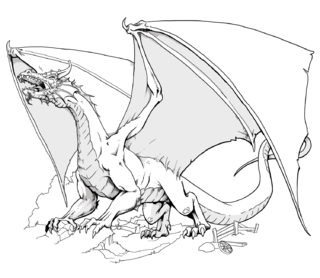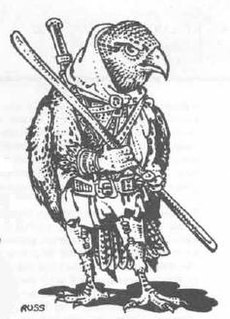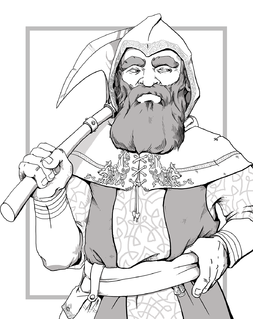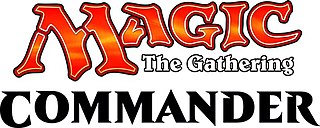
Mystara is a campaign setting for the Dungeons & Dragons fantasy role playing game. It was the default setting for the "Basic" version of the game throughout the 1980s and 1990s. Most adventures published for the "Basic" edition of D&D take place in "The Known World", a central continent that includes a varied patchwork of both human and non-human realms. The human realms are based on various real-world historical cultures. In addition, unlike other D&D settings, Mystara had ascended immortal beings instead of gods.
Naga or NAGA may refer to:

Warhammer Fantasy is a fictional fantasy universe created by Games Workshop and used in many of its games, including the table top wargame Warhammer Fantasy Battle, the Warhammer Fantasy Roleplay (WFRP) pen-and-paper role-playing game, and a number of video games: the MMORPG Warhammer Online: Age of Reckoning, the strategy games Total War: Warhammer, Total War: Warhammer II and Total War: Warhammer III and the two first-person shooter games in the Warhammer Vermintide series, Warhammer: End Times - Vermintide and Warhammer: Vermintide 2.

In the Dungeons & Dragons (D&D) fantasy role-playing game, dragons are an iconic type of monstrous creature. As a group, D&D dragons are loosely based upon dragons from a wide range of fictional and mythological sources. Dungeons & Dragons allows players to fight its fictional dragons and "slay their psychic dragons" as well. These dragons, specifically their "dungeon ecology", have implications for the literary theory of fantasy writing. D&D dragons also featured as targets of the moral panic surrounding the game.

Legend of the Five Rings is a fictional setting created by John Zinser, Dave Seay, Ryan Dancey, Dave Williams, DJ Trindle, Matt Wilson and John Wick and first published by a joint venture between Alderac Entertainment Group and ISOMEDIA in 1995. The setting primarily involves the fictional empire of Rokugan, though some additional areas and cultures have been discussed. Rokugan is based roughly on feudal Japan with influences from other East Asian cultures such as China, Mongolia and Korea. This setting is the basis for the Legend of the Five Rings Collectible Card Game as well as the Legend of the Five Rings Roleplaying Game. Legend of the Five Rings was also the "featured campaign setting" of the Oriental Adventures expansion to the third edition of Dungeons & Dragons, though this book is now out of print.

Oriental Adventures is the title shared by two hardback rulebooks published for different versions of the Dungeons & Dragons (D&D) fantasy roleplaying game. Each version of Oriental Adventures provides rules for adapting its respective version of D&D for use in campaign settings based on the Far East, rather than the medieval Europe-setting assumed by most D&D books. Both versions of Oriental Adventures include example campaign settings.
The warforged are one of the playable fictional races of creatures in the Eberron campaign setting of the Dungeons & Dragons fantasy role-playing game.

Legend of the Five Rings (L5R) is an out-of-print collectible card game created by a joint venture featuring Alderac Entertainment Group and ISOMEDIA in 1995 and published until 2015, when it was announced that the game would be discontinued for a rules-incompatible successor that will be part of Fantasy Flight Games' Living Card Game line. L5R takes place in the fictional empire of Rokugan from the Legend of the Five Rings setting, where several clans and factions vie for domination over the empire.
Birthright is a Dungeons & Dragons campaign setting that was first released by TSR in 1995. It is based on the continent of Cerilia on the world of Aebrynis, in which the players take on the role of the divinely-empowered rulers, with emphasis on the political rulership level of gameplay. The setting revolves around the concept of bloodlines: divine power gained by heroes and passed to their descendants. Characters with a bloodline create an aura of command known as Regency, which is measured in the game using regency points or RP. Using regency, characters acquire a domain composed of provinces and holdings. The development of these domains is as much a part of the game as development of the characters. The game uses three-month domain turns to model actions of rulers over nations in much the same way as Dungeons & Dragons uses combat rounds to simulate time to model the characters' actions in battle. In 1996, Birthright won the Origins Award for Best Roleplaying Supplement of 1995.
The collectible card game Magic: The Gathering published seven expansion sets from 1993–1995, and one compilation set. These sets contained new cards that "expanded" on the base sets of Magic with their own mechanical theme and setting; these new cards could be played on their own, or mixed in with decks created from cards in the base sets. With Magic's runaway success, many of the printings of these early sets were too small to satisfy the rapidly growing fanbase. Cards from them became rare, hard to find, and expensive. It was not until Fallen Empires and Homelands that Wizards of the Coast was able to print enough cards to meet demand; additionally, Wizards of the Coast published Chronicles, a reprint set that helped fix many of the scarcity issues with the earliest sets.

Kenku(pronounced keng-KOO or KENK-oo) are a fictional race of bird-like humanoid creatures in the Dungeons & Dragons fantasy roleplaying game. They have appeared in multiple editions in the game's history and became an official playable race in Volo's Guide to Monsters. They are loosely based on tengu, spiritual beings in Japanese mythology, and are most recognizable for their lack of a voice; instead of speaking themselves, they use their gift of mimicry to communicate. Jeremy Crawford, lead rules designer of the Dungeons & Dragons game, says "[they] can cleverly piece together voices and sounds they've heard to communicate".

Arcanis was originally a campaign setting for the Dungeons & Dragons game, created by Henry Lopez and supported by Paradigm Concepts. It is also the name of the fictional world where the setting takes place. The setting was launched in 2001 and is known for its odd twists on the fantasy genre, as well as its wide member approval and community-based design and construction. Unlike many other fantasy roleplaying games, which focus primarily on tactical combat, the Arcanis campaigns focus on moral ambiguity and politics.

James Wyatt is a game designer and a former United Methodist minister. He works for Wizards of the Coast, where he has designed supplements and adventures for the Dungeons & Dragons (D&D) roleplaying game. He is the author of sci-fi and fantasy novels, including Forgotten Realms books, and the 4th edition Dungeon Master's Guide.

A dwarf, in the Dungeons & Dragons (D&D) fantasy roleplaying game, is a humanoid race, one of the primary races available for player characters. The idea for the D&D dwarf comes from the dwarves of European mythologies and J. R. R. Tolkien's novel The Lord of the Rings (1954-1955), and has been used in D&D and its predecessor Chainmail since the early 1970s. Variations from the standard dwarf archetype of a short and stout demihuman are commonly called subraces, of which there are more than a dozen across many different rule sets and campaign settings.
The flexibility of the Dungeons & Dragons (D&D) game rules means that Dungeon Masters (DM) are free to create their own fantasy campaign settings. For those who wanted a pre-packaged setting in which to play, TSR, Wizards of the Coast (WotC), and other publishers have created many settings in which D&D games can be based; of these, the Forgotten Realms, an epic fantasy world, has been one of the most successful and critically acclaimed settings. Many campaign settings include standard sword and sorcery environments, while others borrow Asian, Central American, swashbuckling, horror and even space-travel themes.

The Legend of the Five Rings Roleplaying Game is a role-playing game originally written by John Wick and published by Alderac Entertainment Group, under license from Five Rings Publishing Group, in 1997. The game uses the Legend of the Five Rings setting, primarily the nation of Rokugan, which is based on feudal Japan with influences from other East Asian cultures.
Ravnica is a Magic: The Gathering block that consists of three expert-level expansion sets: Ravnica: City of Guilds, Guildpact, and Dissension. Following in the tradition of other Magic blocks, Ravnica takes place in a plane of the multiverse that was previously unexplored in the game's backstory. The world of Ravnica is an ecumenopolis, a vast city that covers the entire surface of its planet, and is home to a diverse assortment of sentient races. Much power in Ravnica is held by the ten "guilds", political factions that each represent a combination of two of Magic's five colors. The mythology of Ravnica is loosely derived from Slavic folklore, and the character names reflect this. This plane was revisited in the Return to Ravnica block, and the Guilds of Ravnica,Ravnica Allegiance and War of the Spark sets.

Commander is a series of supplemental Magic: the Gathering card game products. Its mechanics are derived from a fan-created format known as "Elder Dragon Highlander (EDH)". The official Commander format is "the only sanctioned format maintained by an outside entity" other than Wizards of the Coast.
Ree Soesbee is an American game designer of collectible card games, role-playing games, and massively multiplayer online role-playing games (MMORPGs), as well as a writer of primarily fantasy novels.
Khans of Tarkir is a Magic: The Gathering block consisting of Khans of Tarkir, Fate Reforged, and Dragons of Tarkir. The block's setting is based on a mix of cultures of Central and East Asia.











